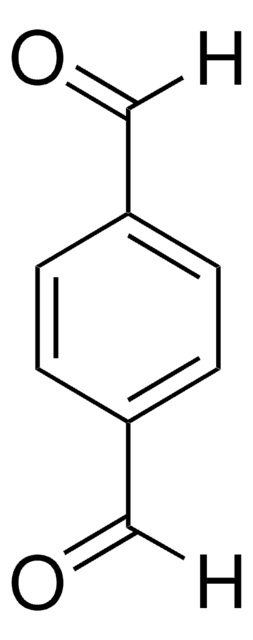49629
Glutaraldéhyde solution
technical, ~50% in H2O (5.6 M)
Synonyme(s) :
Dialdéhyde glutarique solution, Pentane-1,5-dial
About This Item
Produits recommandés
Qualité
technical
Niveau de qualité
Forme
liquid
Concentration
~50% in H2O (5.6 M)
Couleur
colorless
Indice de réfraction
n20/D 1.421
Pf
-21 °C ((-6 °F))
Solubilité
water: soluble
Chaîne SMILES
[H]C(CCCC([H])=O)=O
InChI
1S/C5H8O2/c6-4-2-1-3-5-7/h4-5H,1-3H2
Clé InChI
SXRSQZLOMIGNAQ-UHFFFAOYSA-N
Vous recherchez des produits similaires ? Visite Guide de comparaison des produits
Application
- Optical-transparent and flexible glucose sensor with ITO electrode.: This paper presents the design and testing of an innovative optical-transparent and flexible glucose sensor, which includes an Indium Tin Oxide (ITO) electrode, for enhanced performance and usability in medical diagnostics (Mitsubayashi K et al., 2003).
Attention
Autres remarques
Mention d'avertissement
Danger
Mentions de danger
Classification des risques
Acute Tox. 3 Inhalation - Acute Tox. 4 Oral - Aquatic Acute 1 - Aquatic Chronic 2 - Eye Dam. 1 - Resp. Sens. 1 - Skin Corr. 1B - Skin Sens. 1 - STOT SE 3
Organes cibles
Respiratory system
Risques supp
Code de la classe de stockage
6.1A - Combustible acute toxic Cat. 1 and 2 / very toxic hazardous materials
Classe de danger pour l'eau (WGK)
WGK 3
Point d'éclair (°F)
Not applicable
Point d'éclair (°C)
Not applicable
Listes réglementaires
Les listes réglementaires sont principalement fournies pour les produits chimiques. Seules des informations limitées peuvent être fournies ici pour les produits non chimiques. L'absence d'indication signifie qu'aucun des composants n'est répertorié. Il incombe à l'utilisateur de s'assurer de l'utilisation sûre et légale du produit.
EU REACH SVHC Candidate List
Faites votre choix parmi les versions les plus récentes :
Déjà en possession de ce produit ?
Retrouvez la documentation relative aux produits que vous avez récemment achetés dans la Bibliothèque de documents.
Les clients ont également consulté
Notre équipe de scientifiques dispose d'une expérience dans tous les secteurs de la recherche, notamment en sciences de la vie, science des matériaux, synthèse chimique, chromatographie, analyse et dans de nombreux autres domaines..
Contacter notre Service technique






